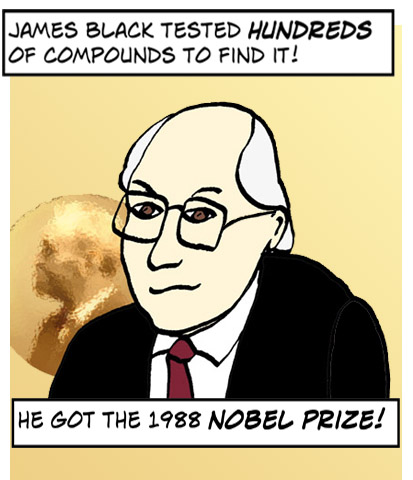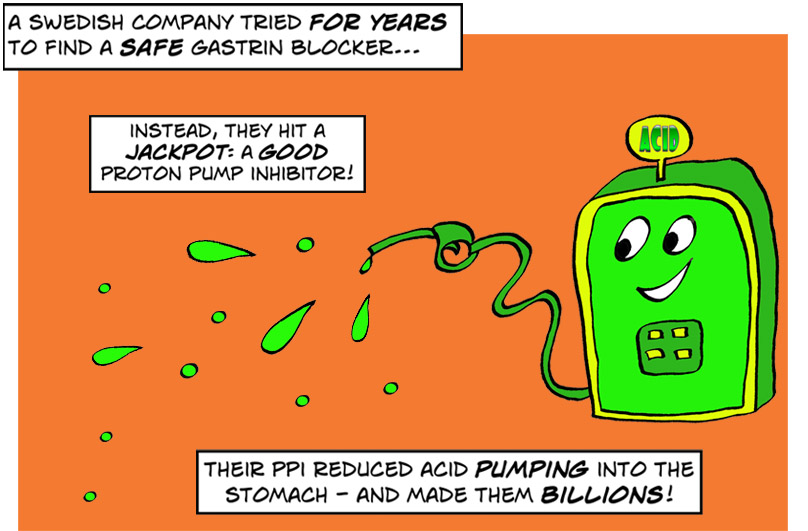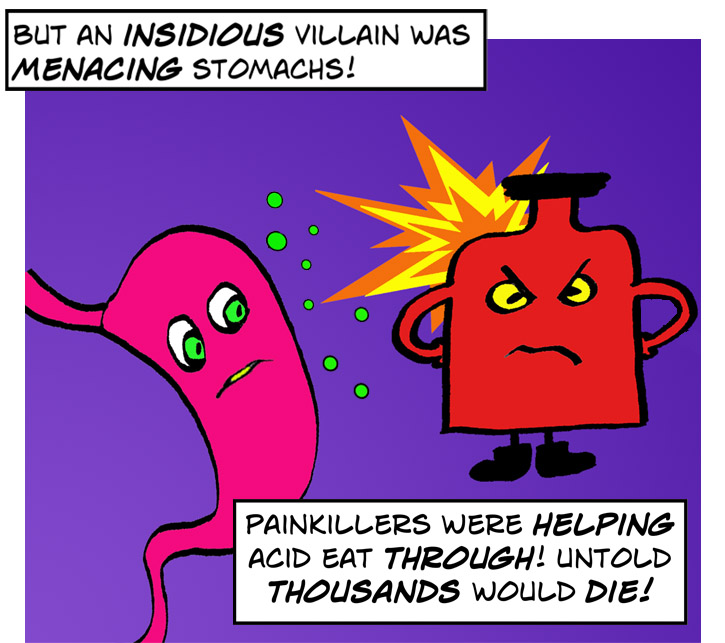Pylori Story #3: Drug Wars – The Lab Strikes Back
Scientists plotted in their labs, looking for a chemical target to stop the acid. The first lead was a hormone trigger for acid. John Edkins found gastrin in 1905.
Concludes in #4. (Click on links to other installments below.)
~~~~
The first H2-RA (Histamine-2 receptor antagonist) was cimetidine (brand name Tagamet), although the H2-RA that became the world’s best-selling drug in the 1980s was ranitidine (brand name Zantac).
The first proton pump inhibitor (PPI) was omeprazole (first brand name Losec, now Prilosec), and for a time it became the world’s best-selling drug.
Bibliography
Cappell MS, Wayne JD, Farrar JT, Sleisenger MH. Fifty landmark discoveries in gastroenterology during the past 50 years: a brief history of modern gastroenterology at the Millennium: Part I. Gastrointestinal procedures and upper gastrointestinal disorders. Gastroenterology Clinics of North America 2000; 29: 223-263.
Carlsson E. The Omeprazole story: how endurance in research may pay off. Kruse CG, Timmerman H (meds). Towards drugs of the future: key issues in lead finding and lead optimization. IOS Press, Solvay Pharmaceuticals Conferences. 2008: 101-110. (Includes photo of Ylva Ortengren’s lab notebook of the day 168/68 – Omeprazole/Losec – was first synthesized.)
Griffin MR. Epidemiology of non steroidal anti-inflammatory drug-associated gastrointestinal injury. Am J Med 1998; 104: 23S-29S.
Gustafson J, Welling D. “No acid, no ulcer” – 100 years later: a review of the history of peptic ulcer disease. J Am Coll Surg 2010; 1: 110- 116.
Lewis JD, Bilker WB, Brensinger C, Farrar JT, Strom BL. Hospitalization and mortality rates from peptic ulcer disease and GI bleeding in the 1990s: relationship to sales of nonsteroidal anti-inflammatory drugs and acid suppression medication. Am J Gastroenterology 2002; 97: 2540-2549.
Modlin IM, Sachs G, Wright N, Kidd M. Edkins and a century of acid suppression. Digestion 2005; 72: 129-145.
The comic in this post is my own (CC-NC-ND-SA license). (More of my cartoons at Statistically Funny and on Tumblr.) With apologies for the lack of the resemblance to the actual people depicted!
The chemical structure of gastrin used here is minigastrin, by Edgar181 in Wikimedia Commons.
* The thoughts Hilda Bastian expresses here at Absolutely Maybe are personal, and do not necessarily reflect the views of the National Institutes of Health or the U.S. Department of Health and Human Services.













